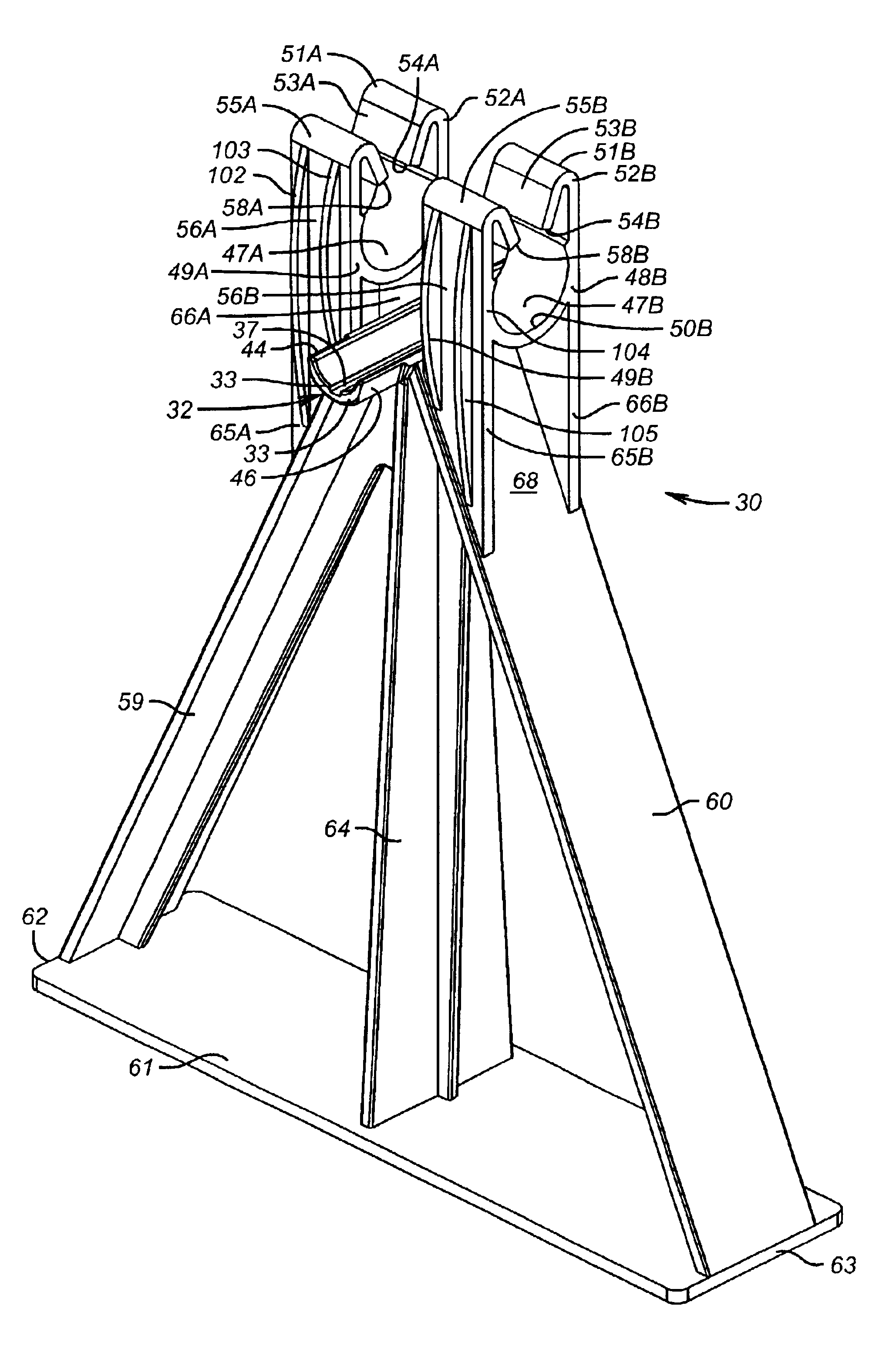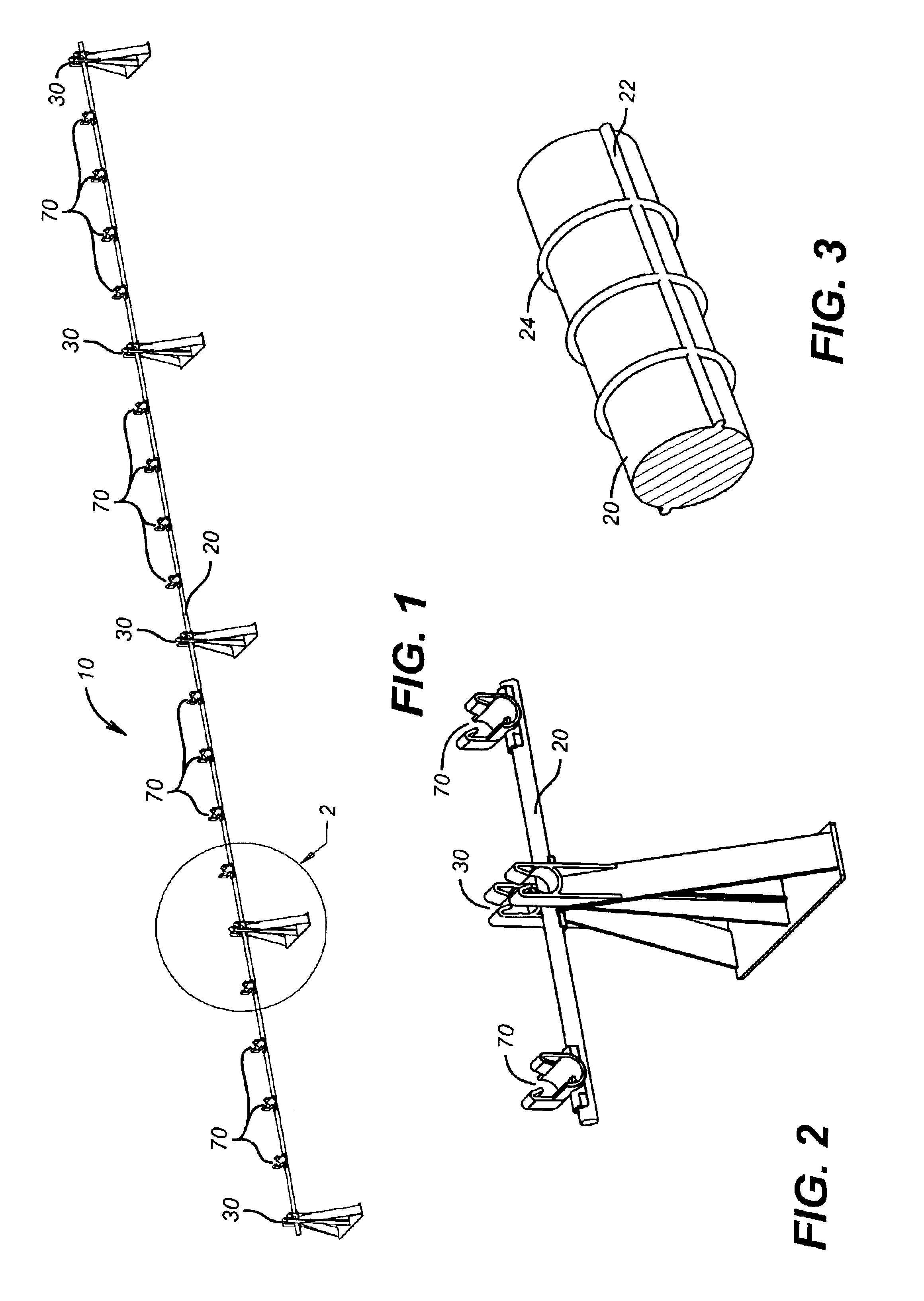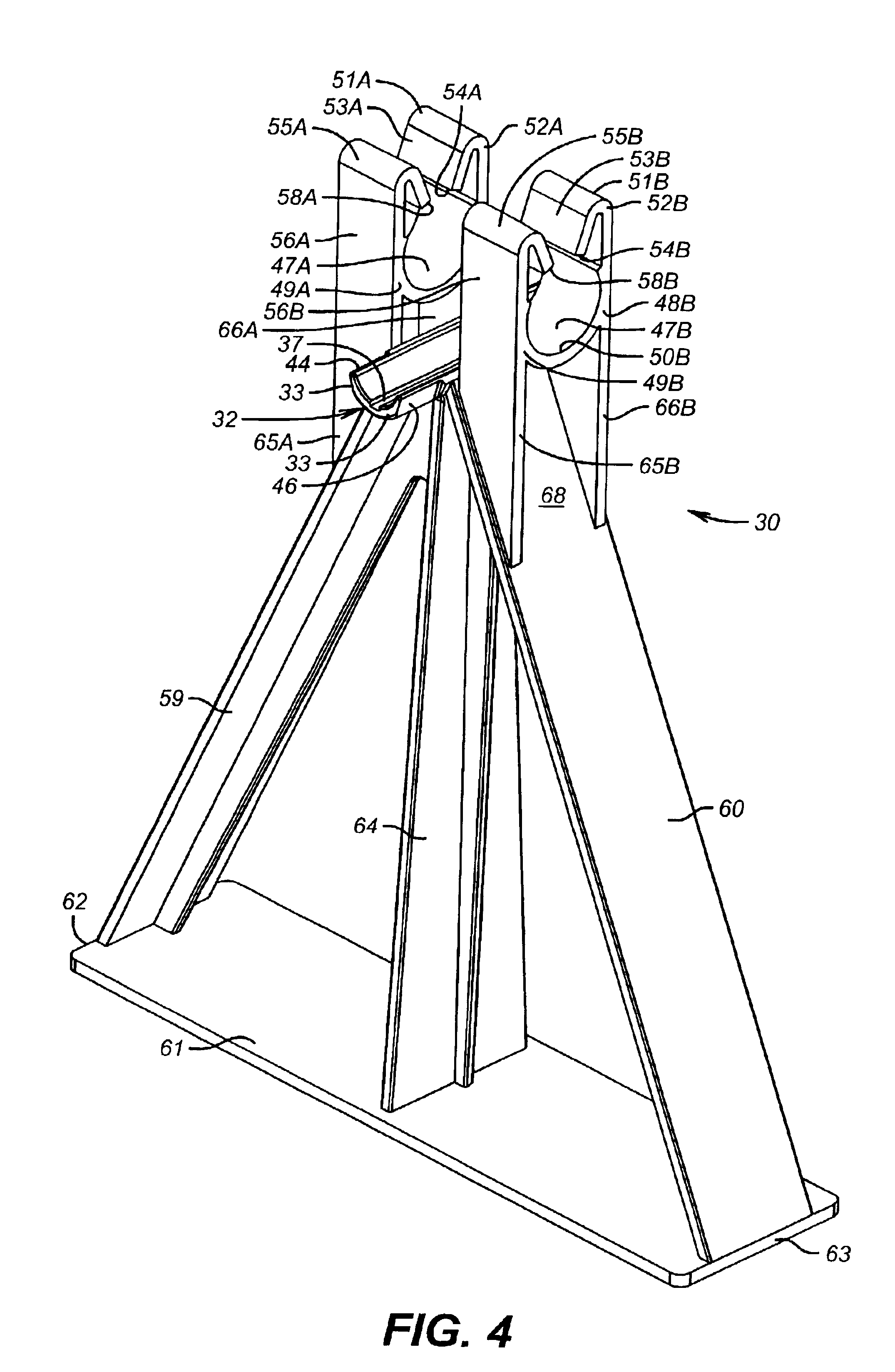Apparatus for placing rebar in continuously reinforced concrete paving
a technology of continuous reinforcement and rebar, which is applied in the direction of paving reinforcements, building repairs, roads, etc., can solve the problems of inability to support sections of the mat, the life cycle and the ride quality of the concrete road can become severely reduced, and the concrete invariably develops
- Summary
- Abstract
- Description
- Claims
- Application Information
AI Technical Summary
Benefits of technology
Problems solved by technology
Method used
Image
Examples
Embodiment Construction
In describing the novel longitudinal bar capture and locking structures of this invention, the transverse bar chair embodiment and the transverse bar saddle clip embodiment will be described initially in connection with a new type of TBA for use at least in places where wire tying of longitudinal rebar is not favored. This facilitates economy and completeness of description, since describing the transverse bar chair and its operation in that context also describes the structure of the transverse bar chair which can be used in a standalone capacity in places where wire tying of longitudinal rods to transverse bars is permitted. In those places, the transverse bar saddle clip is not needed.
Referring to FIG. 1, a transverse bar assembly comprising apparatus of this invention for use in holding crossing reinforcing rods in position at an intersection for receiving a concrete pour is referenced generally by numeral 10. Transverse bar assembly 10 includes transverse bar 20, which is an el...
PUM
| Property | Measurement | Unit |
|---|---|---|
| angle | aaaaa | aaaaa |
| angle | aaaaa | aaaaa |
| temperatures | aaaaa | aaaaa |
Abstract
Description
Claims
Application Information
 Login to View More
Login to View More - R&D
- Intellectual Property
- Life Sciences
- Materials
- Tech Scout
- Unparalleled Data Quality
- Higher Quality Content
- 60% Fewer Hallucinations
Browse by: Latest US Patents, China's latest patents, Technical Efficacy Thesaurus, Application Domain, Technology Topic, Popular Technical Reports.
© 2025 PatSnap. All rights reserved.Legal|Privacy policy|Modern Slavery Act Transparency Statement|Sitemap|About US| Contact US: help@patsnap.com



